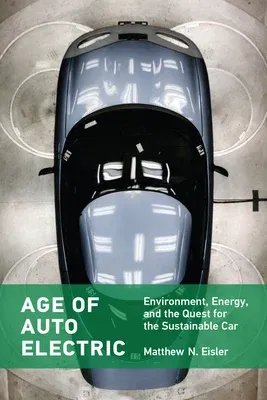The electric vehicle revival reflects negotiations between public
policy, which promotes clean, fuel-efficient vehicles, and the auto
industry, which promotes high-performance vehicles.
Electric cars were once as numerous as internal combustion engine cars
before all but vanishing from American roads around World War I. Now, we
are in the midst of an electric vehicle revival, and the goal for a
sustainable car seems to be within reach. In Age of Auto Electric,
Matthew N. Eisler shows that the halting development of the electric car
in the intervening decades was a consequence of tensions between
environmental, energy, and economic policy imperatives that informed a
protracted reappraisal of the automobile system. These factors drove the
electric vehicle revival, argues Eisler, hastening automaking's
transformation into a science-based industry in the process.
Challenging the common assumption that the electric vehicle revival is
due to the development of better batteries, Age of Auto Electric
instead focuses on changing environmental and socioeconomic conditions,
energy and environmental policies, systems of energy conversion and
industrial production, and innovation practices that affected the
prevalence and popularity of electric vehicles in recent decades. Eisler
describes a world in transition from legacy to alternative
energy-conversion systems and the promises, compromises, new problems,
and unintended consequences that enterprise has entailed.

